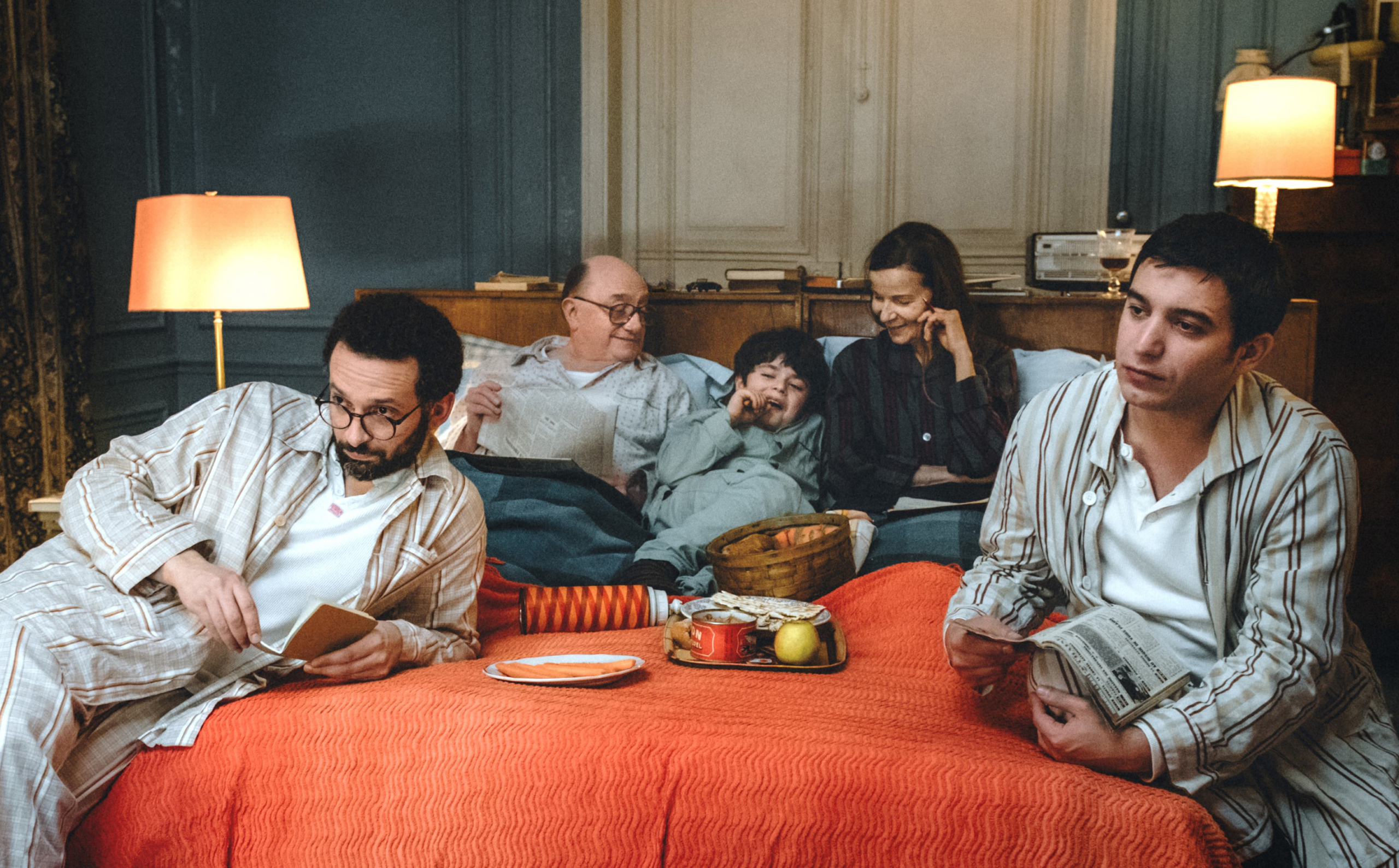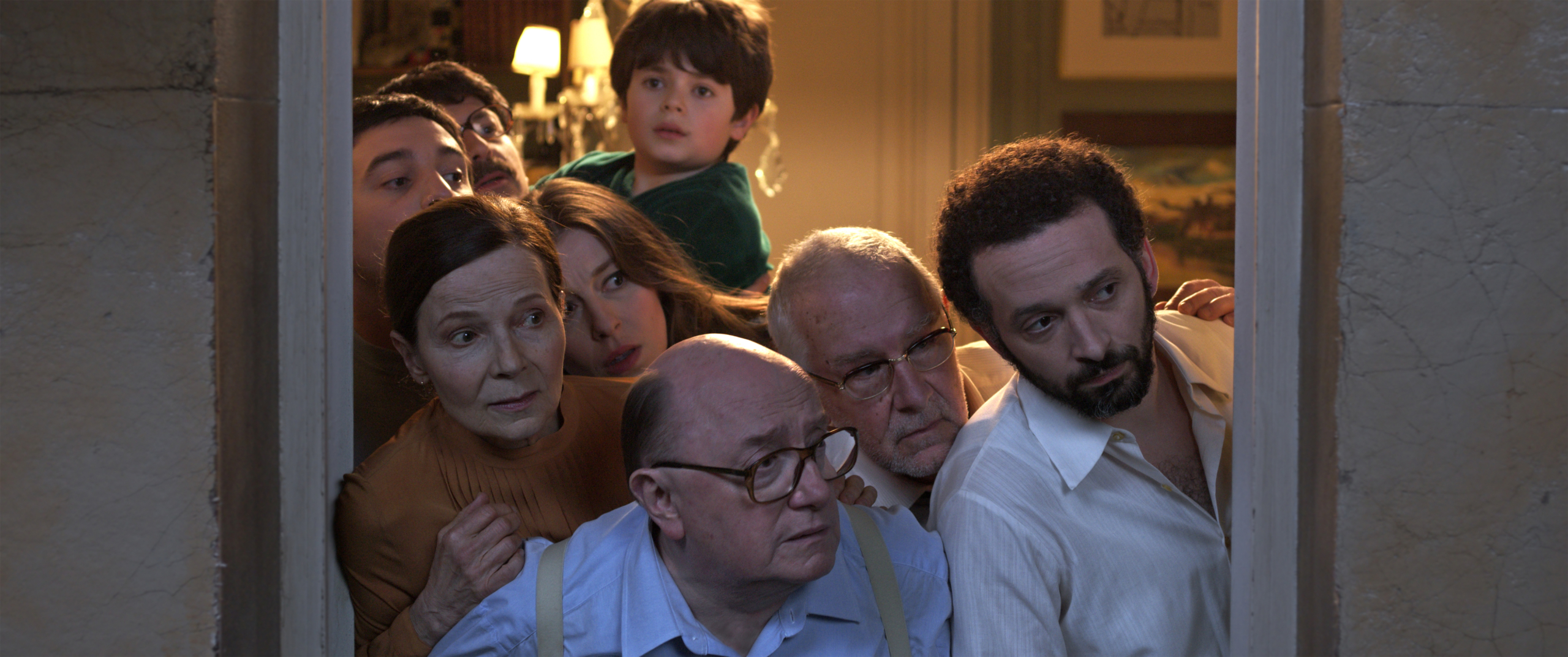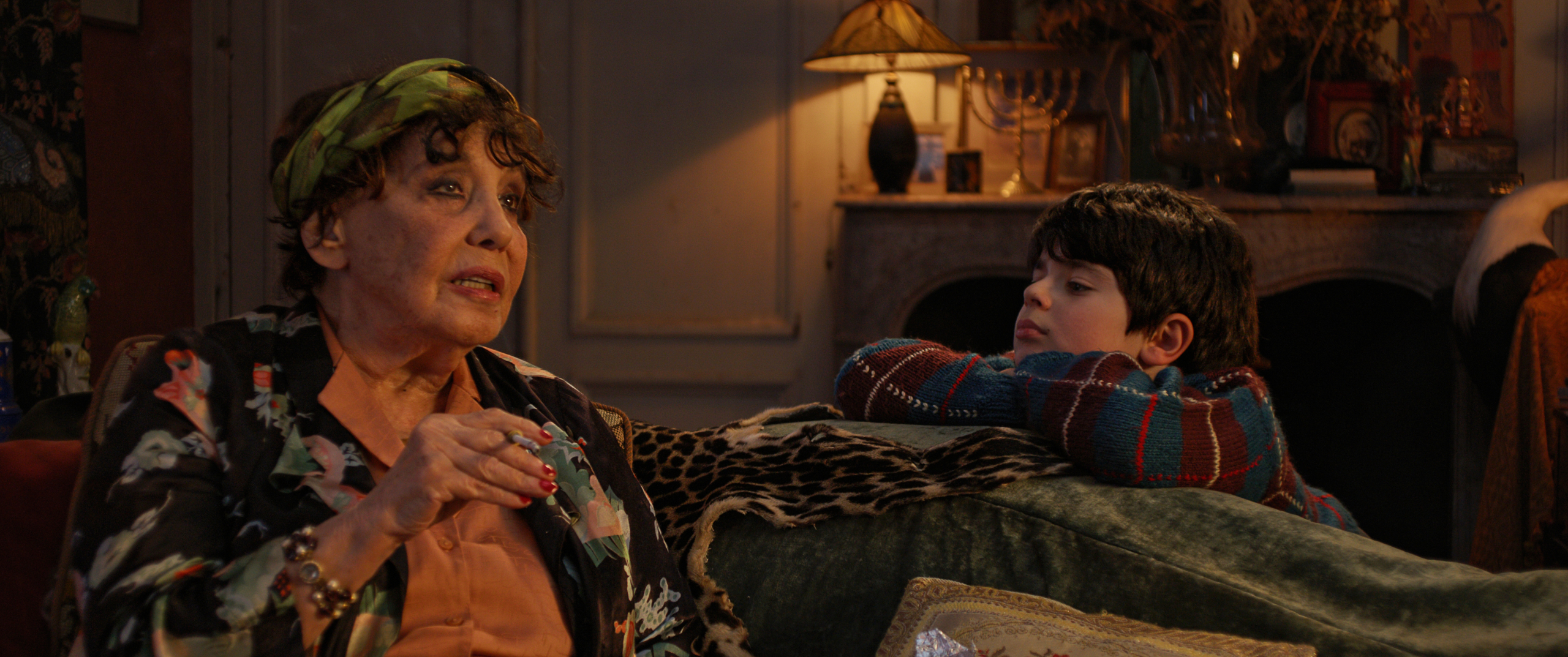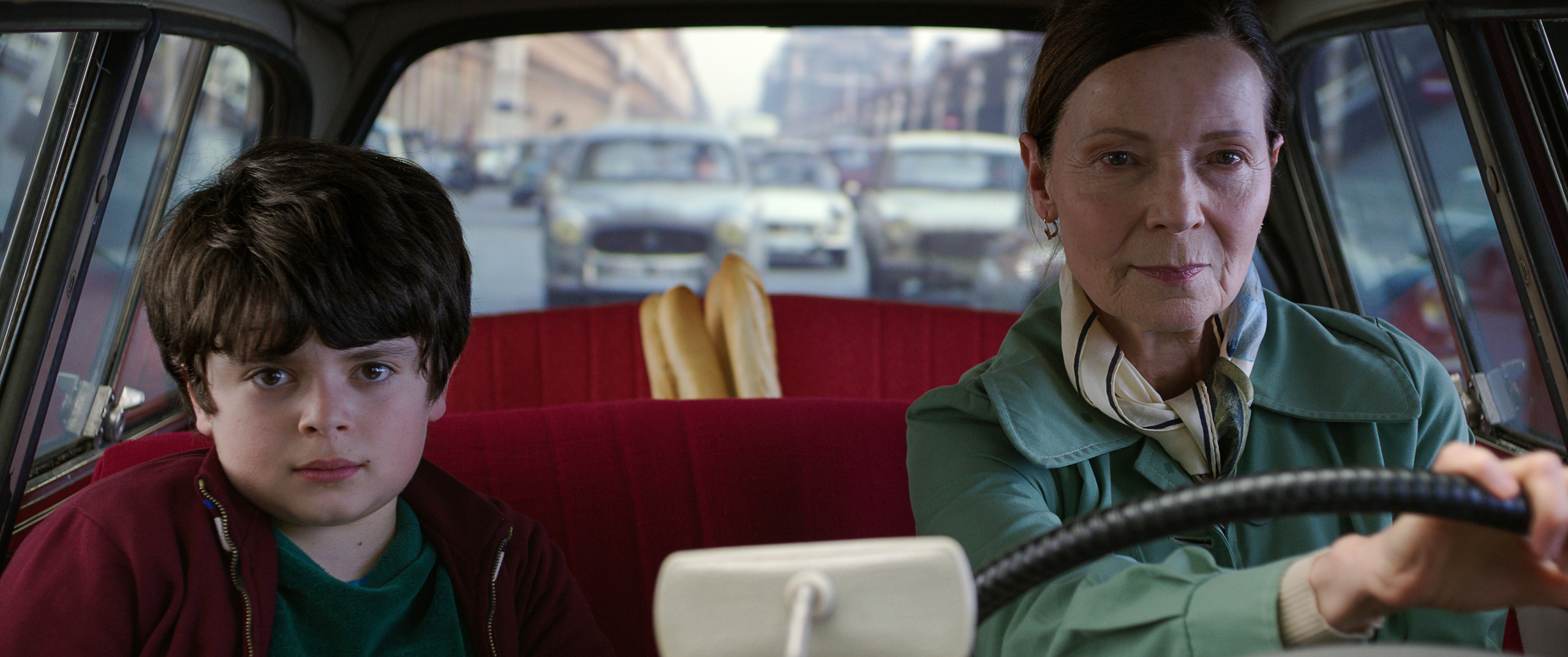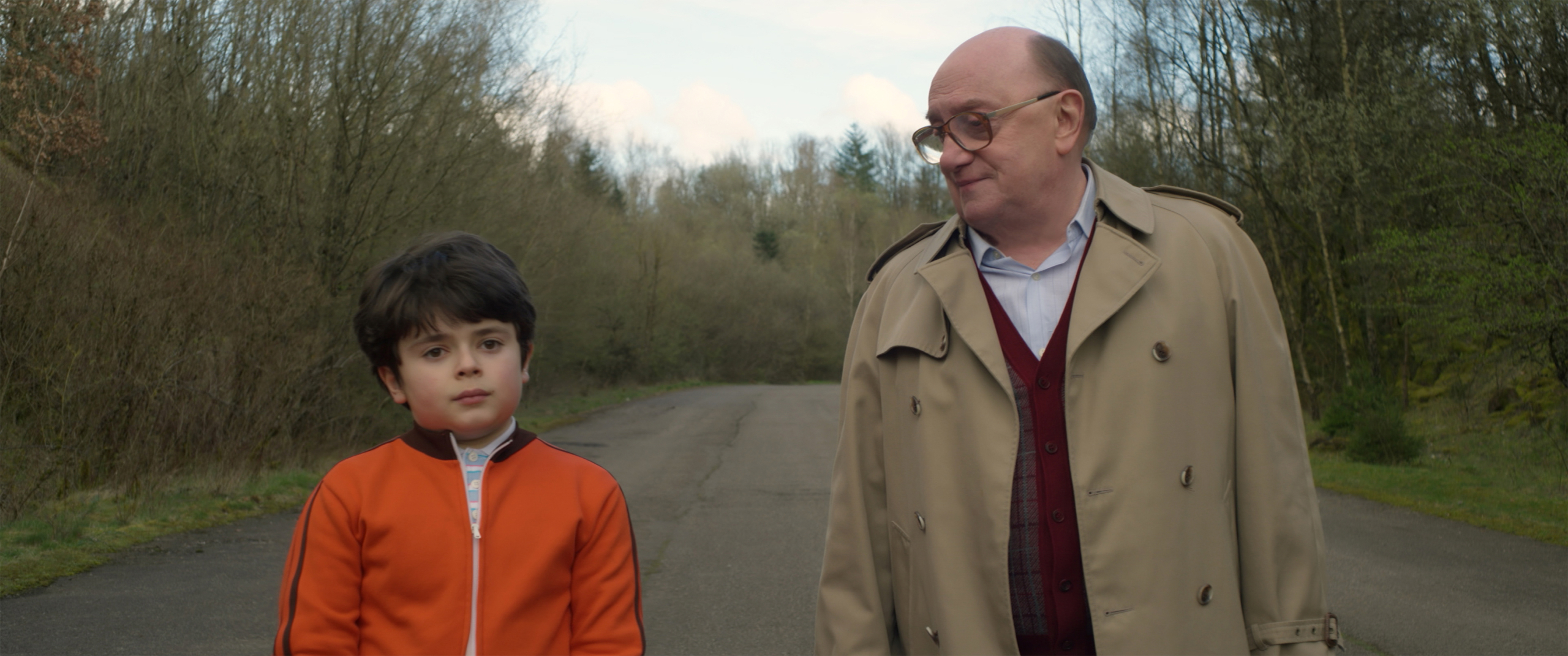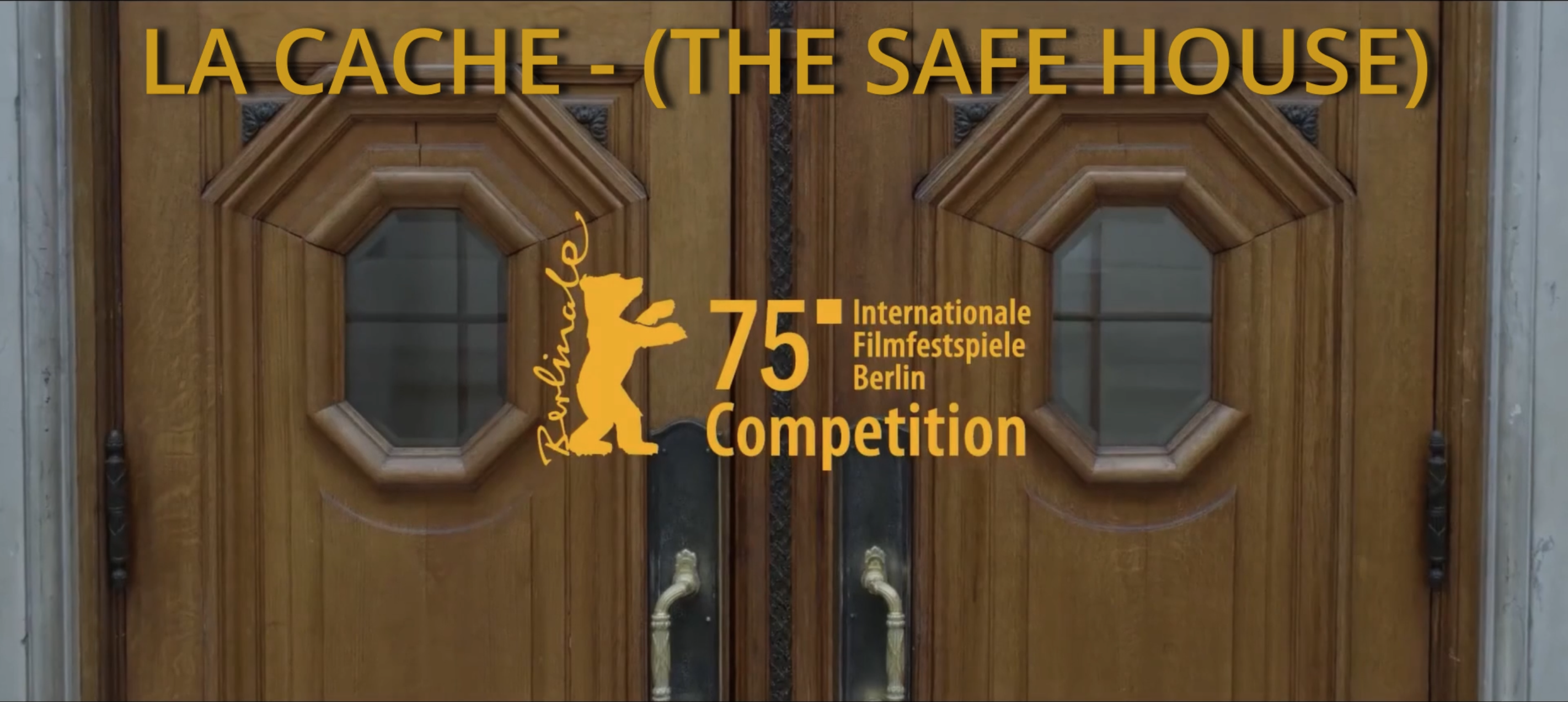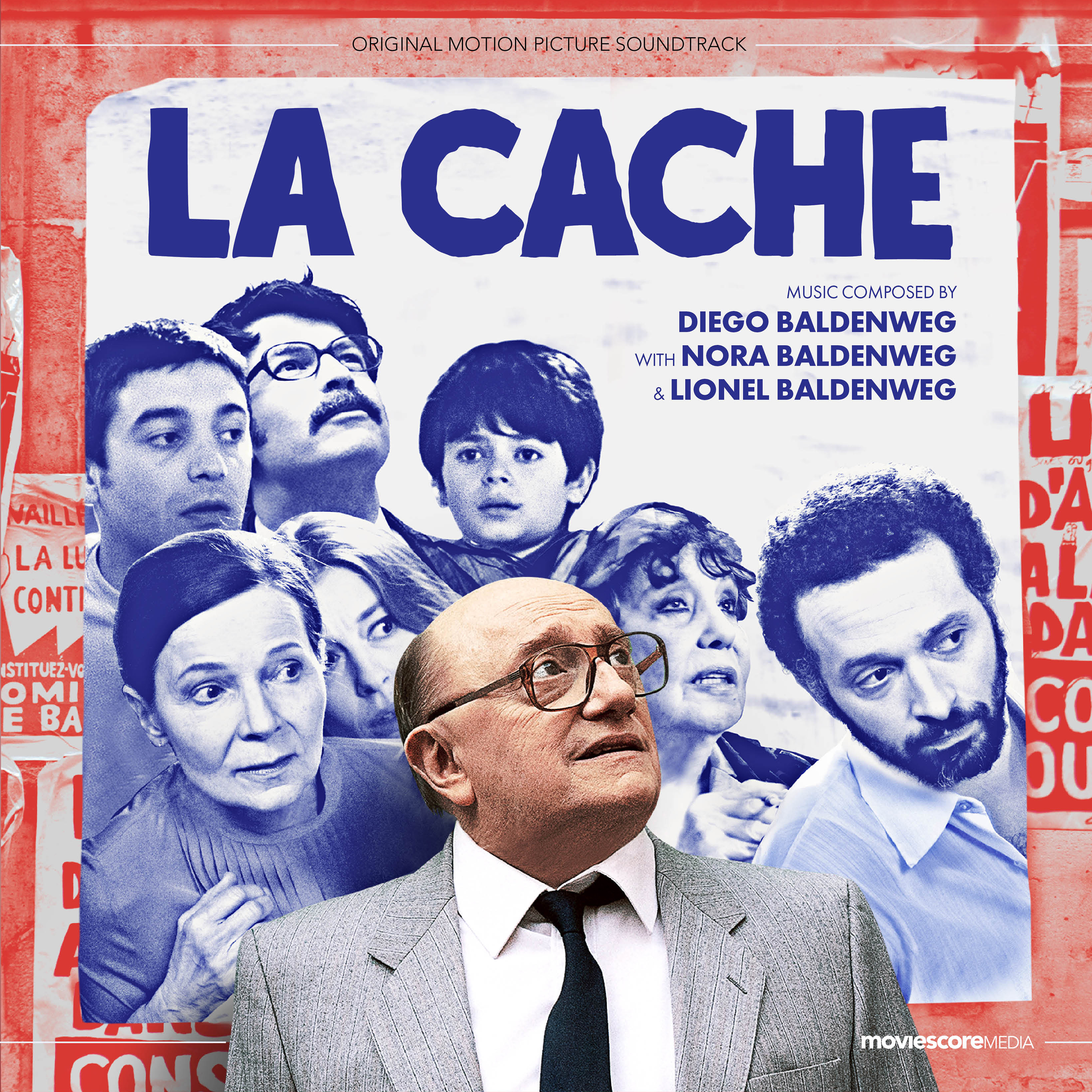La Cache (The Safe House)
2025 (Feature Film / French Comedy)
Starring Michel Blanc, Liliane Rovère, William Lebghil, Dominique Reymond and many more
Directed by Lionel Baier
Screenplay: Christophe Boltanski, Catherine Charrier, Lionel Baier
Cinematographer: Patrick Lindenmaier
Producers: Agnieszka Ramu, Laetitia Gonzalez, Yaël Fogiel, Vincent Quénault, Jeanne Geiben
Music by Diego Baldenweg with Nora Baldenweg & Lionel Baldenweg
Music Arrangements: Diego Baldenweg
Session Preparation & Copyist: Cédric Joël Ziegler
Recording Engineer: Leandro Gianini
Recording Enigneer (Hardstudio): Florian Wetter
Mixing Engineer: Diego Baldenweg & Leandro Gianini
Mastering: Leandro Gianini
Score and improvisations performed by:
Trumpet: Lukas Thöni
Drums: Jonas Ruther
Flutes & Ocarina: Sandro Friedrich
Clarinet: Carolina Segui
Double Bass: Thomas Lähns
Piano: Diego Baldenweg
Piano (End Credits): Alexey Botinov
Publisher: Great Garbo
Label: Buy CD of the "La Cache" Album on MovieScore Media
Plot:
A visually inventive comedy set during the May ‘68 protests in Paris, where a 9-year-old boy stays with his eccentric grandparents and uncles. The family's dynamic shifts when an illustrious guest seeks refuge. Adapted from the novel by Christophe Boltanski, winner of the 2015 Prix Femina.
THE MUSIC
Original Motion Picture Soundtrack:
The Safe House (La Cache)
Eclectic, Jazz, Emotional
The film: Based on the novel by Christophe Boltanski the film shows a multi generation family of Russian/Jewish descent, living in an apartment in Paris during the 68 student revolution. The film is very playful in the way it is told and also touches dark topics like the Nazi occupation in Paris during WW2.
The challenge: The film always balances between quirky/strange and truthful/serious. There is pace and the dialogue is intense and we needed to find a way to create a score that musically fits in and enhances the existing atmosphere. The director Lionel Baier has never worked with composers before. He was used to placing existing music. Finding the musical tone and the actual approach was a mutual and very inspiring step by step process.
The approach: After trying different music approaches, which always gave new ideas for tightening the edit, we ended with fast paced drum grooves complemented by jazzy soloists and in many parts only needing very reduced musical textures played by different live instruments.
To amplify the fast pace of the edit and dialogue we recorded a variety of organic, moody jazz drum grooves. For the more intimate moments we searched for ways to be as close as possible to the protagonists. Instead of relying on electronics or a full orchestra, we decided to mainly work with wind instruments and asked the musicians to musically breathe along with the movement of the protagonists. Based on our musical arrangements and music notes we asked for interpretations and loose improvisations with trumpet, flute, bass flute, ocarina, clarinet, bass clarinet, double bass and piano. The director took part during these recording sessions. Together we started briefing the musicians: "can you play these trumpets as if you were out of breath", "can you play small clarinet trills on the following notes and sound as if you were scared", "can you play bass arpeggio notes on the following 5 notes and always swap around the order", "can you play flute bursts like Jethro Tull".
All in all we captured very intimate and human music performances that mixed really well with the fast paced drums.
Bringing together the vibrant groovy drums with the intimate organic wind instruments, dressed in warm vintage plate reverbs gave this score a compelling 70's vibe. Fun, pace and emotional textural live instruments give this score a human touch.
